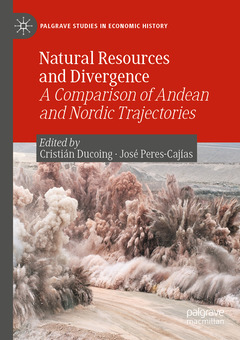Natural Resources and Divergence, 1st ed. 2021 A Comparison of Andean and Nordic Trajectories Palgrave Studies in Economic History Series
Coordonnateurs : Ducoing Cristián, Peres-Cajías José

Cristian Ducoing is a researcher at the Department of Economic History in Lund University. He obtained a Degree in History from the University of Chile, and completed his PhD in Economic History at the University of Barcelona (2012). He has worked as researcher and teacher in the University Pompeu Fabra, University of Valparaiso and Umeå University. His areas of work are natural resources and development, historical national accounts and sustainability. His research has been published in Scandinavian Economic History Research, Sustainability, Australian Economic History Review, among other international journals. He has co-authored more than 10 book chapters and has obtained funded in public and private research funding bodies
José Peres-Cajías is assistant Professor at the Department of Economic History, Institutions, Politics and World Economy. He holds a PhD (Cum Laude) in Economic History from the University of Barcelona (2013). His research aims at understanding the long-term economic development of developing regions by looking at the interplay of institutions, natural resources and trade. He published different articles in international journals including Cliometrica, Economics and Human Biology, Journal of Latin American Studies, Sustainability, Revista de Historia Económica and Economic History of Developing Regions. He also contributed to several chapters of books published by Palgrave, Routledge, Springer and Fondo de Cultura Económica. One of his articles was awarded best article published in international journals by the Spanish Association of Economic History.Date de parution : 07-2022
Ouvrage de 324 p.
14.8x21 cm
Date de parution : 07-2021
Ouvrage de 324 p.
14.8x21 cm
Thèmes de Natural Resources and Divergence :
Mots-clés :
Nature resource management; Economic development; Economic growth; Andean economic history; Nordic economic history; Environmental history; Natural resource history; Technological change; Natural resource curse; Taxation and fiscal policy; Fiscal dependency; Human Capital and Knowledge; Green divergence; Economics and sustainability; Oil and development; Copper sector



